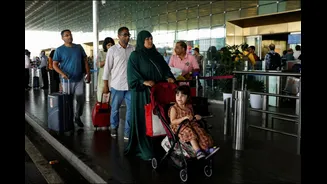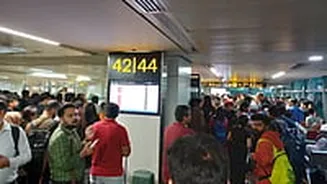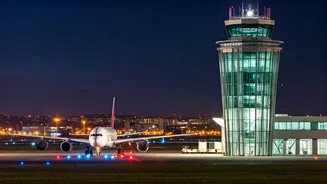Delhi Airport Chaos
On Friday, Delhi's IGI Airport, one of the nation's busiest, experienced severe disruptions. A technical problem within the air traffic control (ATC) system
led to the delay of over 300 domestic and international flights. This issue triggered significant chaos, affecting numerous passengers and airlines. This disruption was compounded by a problem in the Automatic Message Switching System (AMSS) in Delhi, which supports ATC flight planning. The outage began on Friday, causing a significant disturbance across various airlines operating from Delhi. Authorities grounded aircraft as a safety measure. The AMSS failure had a domino effect, with flights originating from Delhi to Mumbai, Jaipur, Lucknow, Varanasi, and other international airports experiencing delays. Reports indicated at least five flights were on hold at the time.
Nepal Airport's Glitch
Simultaneously, Nepal's Tribhuvan International Airport (TIA) was also impacted by a technical issue. A malfunction in the runway lights brought all flight movements to a standstill on Saturday. TIA, as Nepal's main aviation hub, handles most of the country’s air traffic. The issue was identified at 5:30 pm local time, as per a spokesperson. All arrival and departure flights, both domestic and international, were delayed because of the problem. Airport sources noted that at least 800 flights faced delays and roughly 20 were cancelled. Technical teams were rapidly deployed to fix the light issue and restore normal operations as soon as possible. The impact was felt heavily as the airport became unable to process the usual number of flights that it handles daily.
Resolutions and Recovery
By Saturday, positive developments emerged. Officials reported the temporary AMSS outage, which had affected ATC operations, was completely resolved. Normal flight services began to return, not only in Delhi but also across several other airports in northern India. Meanwhile, in Nepal, efforts were underway to rectify the lighting issue at TIA to get operations back on track. Numerous airports issued advisories, advising passengers to stay updated with their respective airlines for real-time flight status updates. While both airports faced significant challenges, the swift actions taken by technical teams highlight the efforts to restore air travel and minimize inconvenience for passengers. The situation underscored the importance of reliable infrastructure for seamless air travel.

















